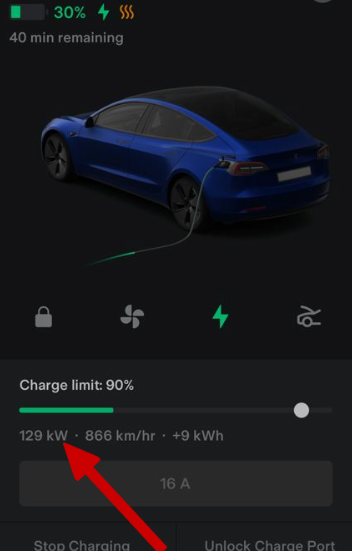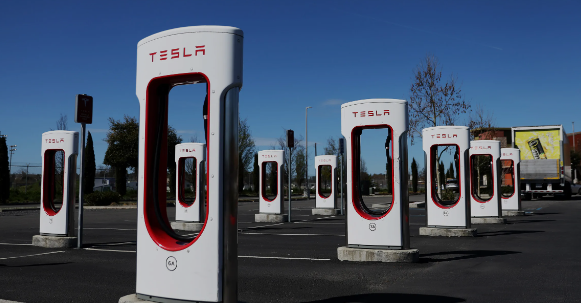When it comes to electric vehicles, the question on everyone’s mind is What is the charging duration for a Tesla? Quick Quide As the automotive industry undergoes a revolutionary shift toward sustainable transportation, Tesla has emerged as a pioneer in the field of electric cars.
Understanding the charging time for a Tesla is crucial for both current owners and prospective buyers. In this comprehensive guide, we will delve into the factors that influence Tesla charging times, from the type of charger used to the specific Tesla model, providing you with the essential insights you need to make informed decisions about your electric driving experience.
What is the charging duration for a Tesla?

The charging duration for a Tesla can vary depending on the specific Tesla model and the type of charger used. On average, a Tesla can charge from empty to full in about 8 to 10 hours using a standard home charger (Level 2 charger). However, with Tesla’s Superchargers, which are high-speed charging stations, you can get a significant charge in as little as 15-30 minutes. It’s important to check the Tesla model and the charger’s capabilities for a more precise estimate.
Electric vehicles have revolutionized the automotive industry, and at the forefront of this transformation is Tesla. As the world embraces sustainable transportation, it’s crucial to comprehend the intricacies of owning a Tesla, and a fundamental question on every Tesla owner’s mind is, What is the charging duration for a Tesla?
The charging time for your Tesla can significantly impact your daily routine and travel plans, making it essential to grasp the factors that influence it. In this guide, we will unravel the mystery behind Tesla’s charging duration, providing you with the knowledge you need to maximize your electric driving experience.
Certainly, let’s expand on each of the factors influencing Tesla’s charging duration:
1. Tesla Model:
– Tesla offers a range of models, from the compact Model 3 to the luxurious Model S and the versatile Model Y and Model X. Each model comes with a different battery size, measured in kilowatt-hours (kWh). Generally, the larger the battery, the longer it takes to charge. For example, a Tesla Model 3 with a Standard Range battery will typically charge faster than a Model X with an Extended Range battery.
2. Charger Type:

– Tesla provides various charging options to cater to different needs. Superchargers are high-speed charging stations strategically located along highways, offering rapid charging. Level 2 chargers, often used at home or in public charging stations, provide a moderate charging speed, while Level 1 chargers are the slowest and can be plugged into a standard household outlet. The charger you use will significantly impact your charging duration.
3. Battery Capacity:
– The size of your Tesla’s battery pack, represented in kWh, directly affects charging time. A larger battery can store more energy, but it also means a longer charging time to fill it up completely. Conversely, a smaller battery requires less time to charge but offers a shorter driving range.
4. State of Charge:
– Charging time isn’t linear. It usually takes less time to top up a partially charged battery than to charge from empty to full. This is because most charging stations operate at a slower rate when the battery is near capacity to protect the battery’s health. So, the time it takes to go from 20% to 80% charge is often quicker than 80% to 100%.
5. Environmental Conditions:
– Environmental factors can have an impact on charging efficiency. Extreme temperatures, whether hot or cold, can affect battery performance and, subsequently, charging time. In cold weather, the battery may need to warm up before accepting a fast charge, while in hot weather, it may require cooling to avoid overheating.
Understanding these factors allows Tesla owners to plan their charging sessions more effectively. For instance, if you’re in a hurry, using a Supercharger can significantly reduce charging time, but it may come at a slightly higher cost. Conversely, if you’re at home overnight, a Level 2 charger may suffice for daily charging needs, as it offers a slower but more cost-effective charging solution.
Average Charging Times:
Charging a Tesla at home with a standard Level 2 charger is a convenient way to maintain your vehicle’s daily driving range. Here are estimated charging times for some common Tesla models using a Level 2 charger:
1. Tesla Model 3 (Standard Range):
– Charging from 0% to 100%: Approximately 8-10 hours
– Charging from 20% to 80% (recommended for daily use): Approximately 4-6 hours
2. Tesla Model 3 (Long Range):
– Charging from 0% to 100%: Approximately 12-15 hours
– Charging from 20% to 80% (recommended for daily use): Approximately 6-8 hours
3. Tesla Model S (Long Range):
– Charging from 0% to 100%: Approximately 14-18 hours
– Charging from 20% to 80% (recommended for daily use): Approximately 7-9 hours
4. Tesla Model X (Long Range):
– Charging from 0% to 100%: Approximately 14-18 hours
– Charging from 20% to 80% (recommended for daily use): Approximately 7-9 hours
Please note that these are approximate charging times and can vary based on factors such as the specific charger’s power output (measured in kilowatts or kW), the initial state of charge of your battery, and environmental conditions. Using a higher-power Level 2 charger can reduce these times.
For faster charging, Tesla owners can also consider installing a Tesla Wall Connector at home, which provides a higher charging power output than standard Level 2 chargers, further reducing charging times. Additionally, Tesla’s Supercharger network offers significantly faster charging options when traveling longer distances.
High-Speed Charging with Superchargers:

Tesla’s Supercharger network is a key selling point for Tesla owners, offering the convenience of rapid charging for long-distance travel and reducing the time required to recharge your electric vehicle significantly. Here are some of the benefits and examples of charging speeds at Tesla’s Supercharger stations:
Benefits of Tesla’s Supercharger Network:
1. Rapid Charging: Superchargers provide a much faster charging speed compared to standard home chargers (Level 2). They are designed for quick top-ups during road trips, making long-distance travel more practical in an electric vehicle.
2. Convenience: Supercharger stations are strategically located along major highways and in high-traffic areas, ensuring that Tesla owners can easily access them during their journeys.
3. Consistency: Tesla’s Supercharger network offers a consistent and reliable charging experience. The company continuously expands and maintains its network to meet the growing demand of Tesla drivers.
Examples of Charging Speeds:
Charging speed at a Tesla Supercharger station can vary based on factors like the Tesla model and the station’s power output. As of my last knowledge update in September 2021, here are some approximate charging times for common Tesla models at a Supercharger station:
– Tesla Model 3 (Long Range):
– Adding up to 170 miles (274 kilometers) of range in about 30 minutes.
– Going from 20% to 80% charge in approximately 30-40 minutes.
– Tesla Model S (Long Range):
– Adding up to 170 miles (274 kilometers) of range in about 30 minutes.
– Going from 20% to 80% charge in approximately 30-40 minutes.
– Tesla Model X (Long Range):
– Adding up to 170 miles (274 kilometers) of range in about 30 minutes.
– Going from 20% to 80% charge in approximately 30-40 minutes.
Please note that these charging speeds are approximate and may vary depending on factors such as the station’s power capacity and the battery’s initial state of charge. Tesla continually improves its Supercharger technology, so charging times may have improved since my last knowledge update.
Using Tesla’s Supercharger network is a game-changer for long-distance travel, as it allows Tesla owners to spend less time charging and more time on the road. Always check the latest information on Tesla’s website or in the Tesla mobile app for the most up-to-date Supercharger locations and charging speeds.
Conclusion:
Understanding the factors that influence the charging duration of your Tesla is essential for optimizing your electric driving experience. Whether you’re charging at home with a standard Level 2 charger or making use of Tesla’s high-speed Supercharger network, making informed choices can save you time, money, and energy.
In this guide, we explored the various aspects that impact charging times, including your Tesla model, charger type, battery capacity, state of charge, and environmental conditions. We also delved into the benefits of Tesla’s Supercharger network, highlighting its ability to rapidly recharge your vehicle during long journeys.

I’m Farhan Hakeem, a passionate automotive enthusiast and the driving force behind . With a deep-rooted love for cars and an unquenchable curiosity about the world of automobiles, I’ve embarked on a journey to share my insights, experiences, and opinions through this platform.
From a young age, the mesmerizing blend of artistry and engineering that cars embody captivated my imagination. Over the years, I’ve honed my understanding of automotive technology, design, and trends, which I now channel into creating engaging and informative content.
